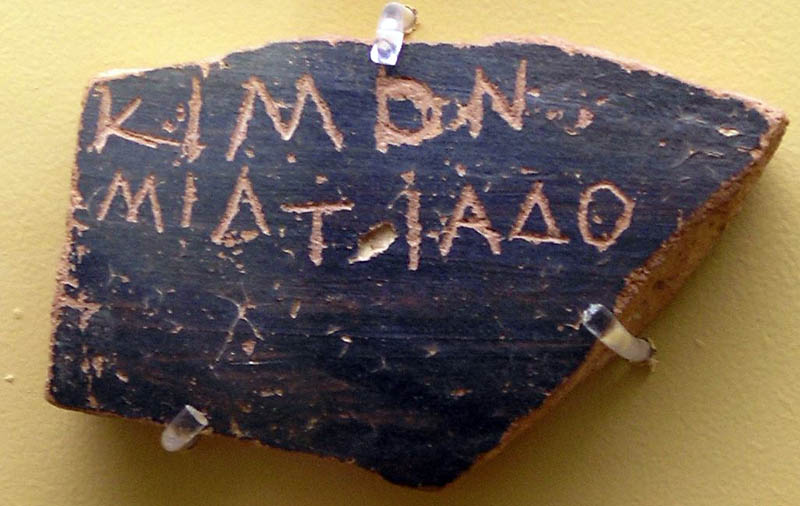
Ostracon
An ostracon (Greek: ὄστρακον ostrakon, plural ὄστρακα ostraka) is a piece of pottery, usually broken off from a vase or other earthenware vessel. In an archaeological or epigraphical context, ostraca refer to sherds or even small pieces of stone that have writing scratched into them. Usually these are considered to have been broken off before the writing was added; ancient people used the cheap, plentiful, and durable broken pieces of pottery around them as a convenient medium to write on for a wide variety of purposes, mostly very short inscriptions, but in some cases very long.
For the journals, see Ostraka (journal). For the similarly pronounced city on the Volga River near the Caspian Sea, see Astrakhan.Ostracism[edit]
In Classical Athens, when the decision at hand was to banish or exile a certain member of society, citizen peers would cast their vote by writing the name of the person on the shard of pottery; the vote was counted and, if unfavorable, the person was exiled for a period of ten years from the city, thus giving rise to the term ostracism. Broken pottery shards were also used for anal hygiene. Scholars have suggested that shards from a vote may have been re-used for this purpose, to curse the exiled individual by soiling their name.[1]
Famous ostraca for Biblical archaeology have been found at:
Additionally, the lots drawn at Masada are believed to have been ostraca, and some potsherds resembling the lots have been found.
In October 2008, Israeli archaeologist, Yosef Garfinkel of the Hebrew University of Jerusalem, discovered what he says to be the earliest known Hebrew text. This text was written on an ostracon sherd; Garfinkel believes this sherd dates to the time of King David from the Old Testament, about 3,000 years ago. Carbon dating of the ostracon and analysis of the pottery have dated the inscription to be about 1,000 years older than the Dead Sea Scrolls. The inscription has yet to be deciphered, however, some words, such as king, slave, and judge have been translated.
The sherd was found about 20 miles southwest of Jerusalem at the Elah Fortress in Khirbet Qeiyafa, the earliest known fortified city of the biblical period of Israel.[15]